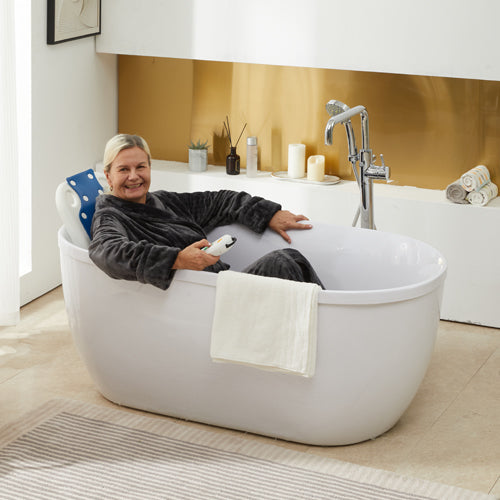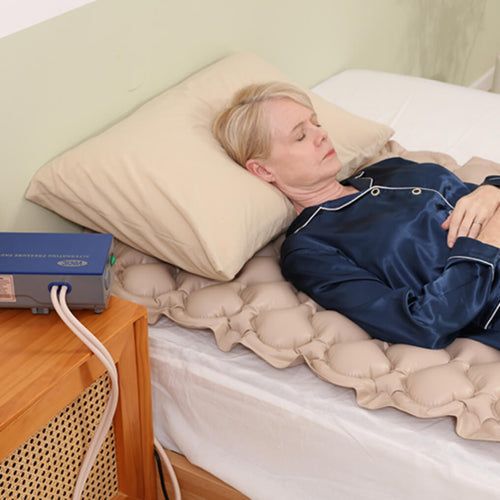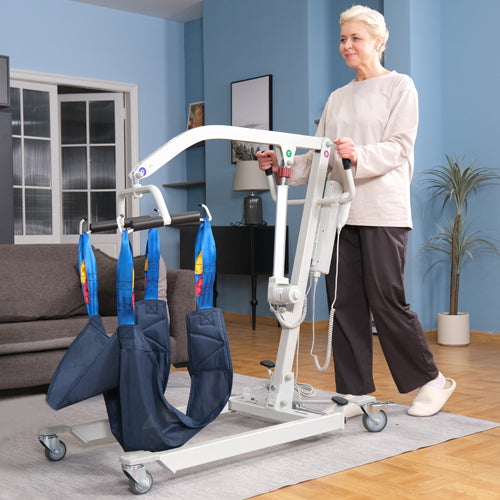Most airplanes allow passengers to bring electric wheelchairs on board, and there are some airlines that state that only wheelchairs that meet their requirements are allowed on board. Therefore, if you decide that you want to bring an electric wheelchair on the plane, you need to check their official website for specific information in advance.
For example: be aware of the airline's policies regarding battery type and wheelchair size, etc. Below I have listed some of the different airlines' rules and carry-on requirements.
Airline Approved Electric Wheelchair
Because of the risk of explosion when transporting charged products on airplanes, airlines have given transportation requirements for all charged products, as well as the documents that need to be prepared for charged products before they can be put on airplanes.
In addition, the transportation fees paid for different sizes and weights of powered motorized wheelchair are different, so it is important to find out in advance how the airlines calculate the transportation of goods to avoid misunderstandings.
-
Battery Requirements: Electric wheelchairs equipped with lithium-ion batteries are generally allowed provided they do not exceed 300 watt hours (Wh) per battery. If the wheelchair has two batteries, each battery must not exceed 160 Wh.
-
Removable: If the wheelchair's battery is removable, it must be brought into the cabin and stored securely to prevent damage. This is a common requirement for most airlines.
-
Wheelchair Design: Foldable power wheelchairs are often preferred for air travel because they are easier to store in the cargo hold of the aircraft. Models specifically advertised as "Airline Approved" or "TSA Approved" are designed to meet these standards.
-
Documentation and Preparation: Be sure to bring documentation proving the type of wheelchair battery and compliance with airline regulations. It is also recommended to carry a wheelchair manual to help airline staff handle it correctly.
-
VOCIC: There are some foldable lithium battery wheelchairs that meet aviation requirements and can be carried on board a plane. If necessary, you can go to our official website for consultation. VOCIC also provides walking aids and other auxiliary tools.
-
Model Ci: This wheelchair has a smaller size and innovative design, making it suitable for air travel.
-
Scout Compact Travel Power by Drive Medical: This wheelchair is also great for travel and is designed to be portable.

Which Airlines Accommodate Wheelchairs?
-
American Airlines: Complying with the U.S. Air Transportation Accessibility Act (ACAA), all types of wheelchairs, including manual and electric wheelchairs, are transported free of charge. Passengers using electric wheelchairs need to inform the airline at the time of booking and before boarding, particularly the battery type and specifications, to ensure safety regulations are met.
-
British Airways: Provides electric wheelchair transportation, but requires passengers to notify the airline 72 hours in advance and provide wheelchair and battery details.
-
Lufthansa: Accepts most types of electric wheelchairs, paying special attention to battery safety and requiring passengers to provide details of the wheelchair battery.
-
Air France: Can transport manual and electric wheelchairs and provides special assistance to passengers traveling with electric wheelchairs, but passengers are required to provide detailed information about the battery and a safety certificate.
-
Emirates: Provides electric wheelchair service, but there are specific restrictions and safety requirements for electric wheelchair batteries, and passengers need to be notified and confirmed before flying.
-
Qantas: Also allows electric wheelchairs on board, but requires passengers to provide all relevant information about the electric wheelchair and the battery, including whether it is a lithium battery and the watt-hour rating of the battery.
Before you travel, it is recommended to contact the airline's customer service department to obtain the most accurate information and necessary travel preparation guidance to ensure that your electric wheelchair can be transported safely. In addition, airline websites often provide detailed instructions on how to prepare and transport an electric wheelchair.

Which Batteries Are Safe for Air Travel?
When traveling by air, not all batteries are considered safe due to potential risks such as short circuits and fires. Here are some considerations for the types of batteries allowed on airplanes:
1. Lithium-ion battery
Lithium-ion batteries are commonly used in portable electronic devices such as smartphones, laptops, and cameras and can be carried in carry-on luggage. For safety reasons, battery capacity is limited to 100 watt hours (Wh), but batteries with capacities up to 160 Wh are allowed with airline approval. These batteries must be protected against short circuits by covering the terminals and should always be carried in the cabin rather than in checked baggage. If you are traveling with lithium-ion batteries as a mobility aid, you need to obtain prior approval from your airline.
2. Nickel metal hydride (NiMH) battery
NiMH batteries are used in some older portable devices and rechargeable household items. These batteries are considered safe for air travel when carried in carry-on luggage. They have fewer restrictions than lithium-ion batteries but still require careful handling to prevent short circuits.
3. Alkaline batteries
Alkaline batteries are disposable batteries commonly used in a variety of devices, including toys, flashlights, and remote controls. These batteries are safe for air travel and can be carried in carry-on or checked luggage with no special restrictions, making them the least problematic in terms of air travel safety.
4. Lead-acid battery
Lead-acid batteries are commonly used in vehicles and some mobility devices, and can only be transported on aircraft if they are sealed and securely attached to the mobile device. These batteries must be encased in a protective case to prevent leakage and require airline approval before travel. If it is not installed in a walking aid, it is usually not allowed in luggage.
Each type of battery has specific air travel guidelines and restrictions, so it's important to check with your airline for their specific rules before traveling.
How to Carry an Electric Wheelchair on a Plane?
Carrying an electric wheelchair on an airplane requires several steps to ensure a smooth and safe journey. Here's a detailed guide on how to do it:
1. Contact the airline
Before traveling, inform the airline that you will be traveling in an electric wheelchair and provide details such as its size, weight, and battery type. Advance communication is important as it allows the airline to prepare for the specific needs of your wheelchair, especially when it comes to battery regulations.
2. Prepare a wheelchair
Prepare your electric wheelchair for air travel by securing the battery and making sure it complies with airline regulations. Remove all removable parts, such as seat cushions and side guards, to prevent them from being lost or damaged during transportation, and secure any moving parts of the wheelchair.
3. Travel day
Arrive at the airport early enough to allow enough time to check in and discuss wheelchair handling with airline staff. Make sure your wheelchair is set to manual mode to prevent accidental operation or remove the key if necessary.
4. On board and in flight
Taking advantage of airline check-in assistance often requires transferring to an aisle wheelchair to reach your seat. Make sure any specific flight needs are communicated to the crew to ensure your comfort and safety during the flight.
5. Upon arrival
Upon arrival, please ensure your electric wheelchair is returned to you at the gate or baggage claim, if possible. Immediately inspect your wheelchair for any potential damage during transport and report any issues immediately to the airline to resolve any issues or file a claim if necessary.
Each of the above steps involves specific preparation and precautions to ensure your electric wheelchair is handled correctly and reaches its destination safely.
Conclusion
Traveling by air with an electric wheelchair requires knowing the specific airline regulations regarding wheelchair size and battery type (especially lithium-ion batteries). Passengers must contact the airline in advance to accommodate their wheelchairs to ensure they adhere to safety standards. This makes it easy for passengers with walkers to fly.
FAQ
1. How to pack a wheelchair for a flight?
When flying with a wheelchair, first contact the airline to understand their specific procedures and prepare your wheelchair by cleaning it and conducting a maintenance check. Detach all removable parts to minimize the risk of damage. Label your wheelchair with personal information and handling instructions, and properly protect any fragile components, especially if it's an electric wheelchair, adhering to specific battery regulations. Check-in early at the airport, and upon arrival, immediately inspect your wheelchair for any damage. If there's any damage, report it to the airline right away.
2. Can you stay in your wheelchair on a plane?
No, you cannot sit in a wheelchair during the flight. For safety reasons, including compliance with Federal Aviation Administration (FAA) regulations, airlines require passengers to transfer from wheelchairs to aircraft seats. However, most airlines offer assistance boarding and disembarking, and many aircraft are equipped with aisle chairs to help passengers with limited mobility get to and from their seats. Your wheelchair will be stored in the hold and typically returned to you at the gate upon arrival.
3. How much does it cost to take an electric wheelchair on a plane?
Generally, checking an electric wheelchair on a plane is free because airlines are required by law to transport disabled passengers' mobility devices free of charge. Advance notification to the airline is required to ensure appropriate arrangements are made, particularly for battery-electric wheelchairs. Please check any additional regulations for international flights first.
Related Reading: Can You Bring Electric Scooters on an Airplane?









